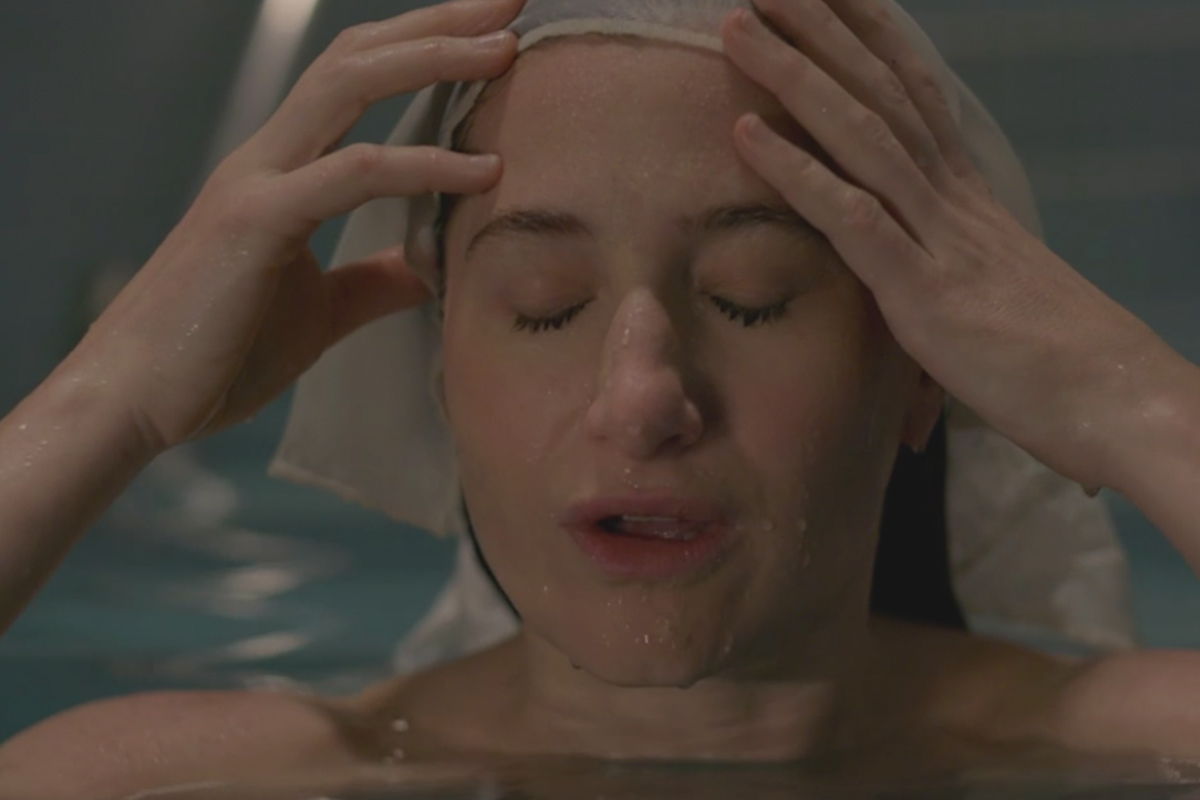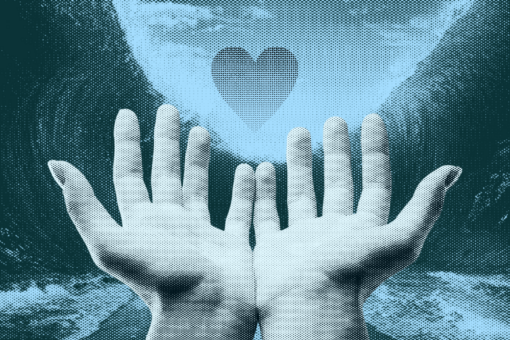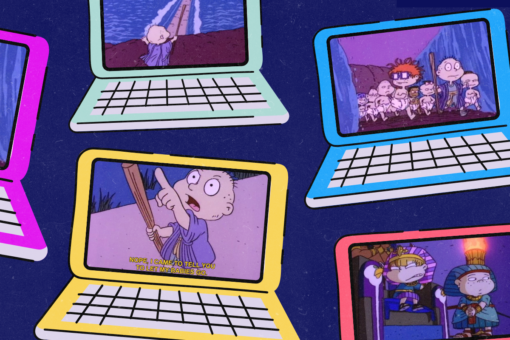In 2003, thousands of Sex and the City fans watched Charlotte York become a Jew. In an iconic scene rife with symbols (some accurate, some assuming) she slowly descends into a pool of water, peering over her shoulder to ask the mikveh witness, “Was this tub drained before me?”
Now, over 15 years later, popular television series continue to depict the ritual of immersing in a mikveh, both to depict conversions to Judaism as well as other reasons Jewish women choose to partake in this ancient ritual. But how do these media portrayals both reflect and reinforce current assumptions and conceptions of what a mikveh even is?
As organizations such as Mayyim Hayyim, a Massachusetts mikveh dedicated to serving the Jewish community of today, advocate for a more progressive, inclusive, and compassionate mikveh experience than that of yore (read more about this in Actually the Mikveh Can be Super Feminist), where does the public perception stand? Carrie Bornstein, Executive Director of Mayyim Hayyim, shares her thoughts on each scene:
1. Sex and the City
“The Perfect Present,” Season 6, Episode 3
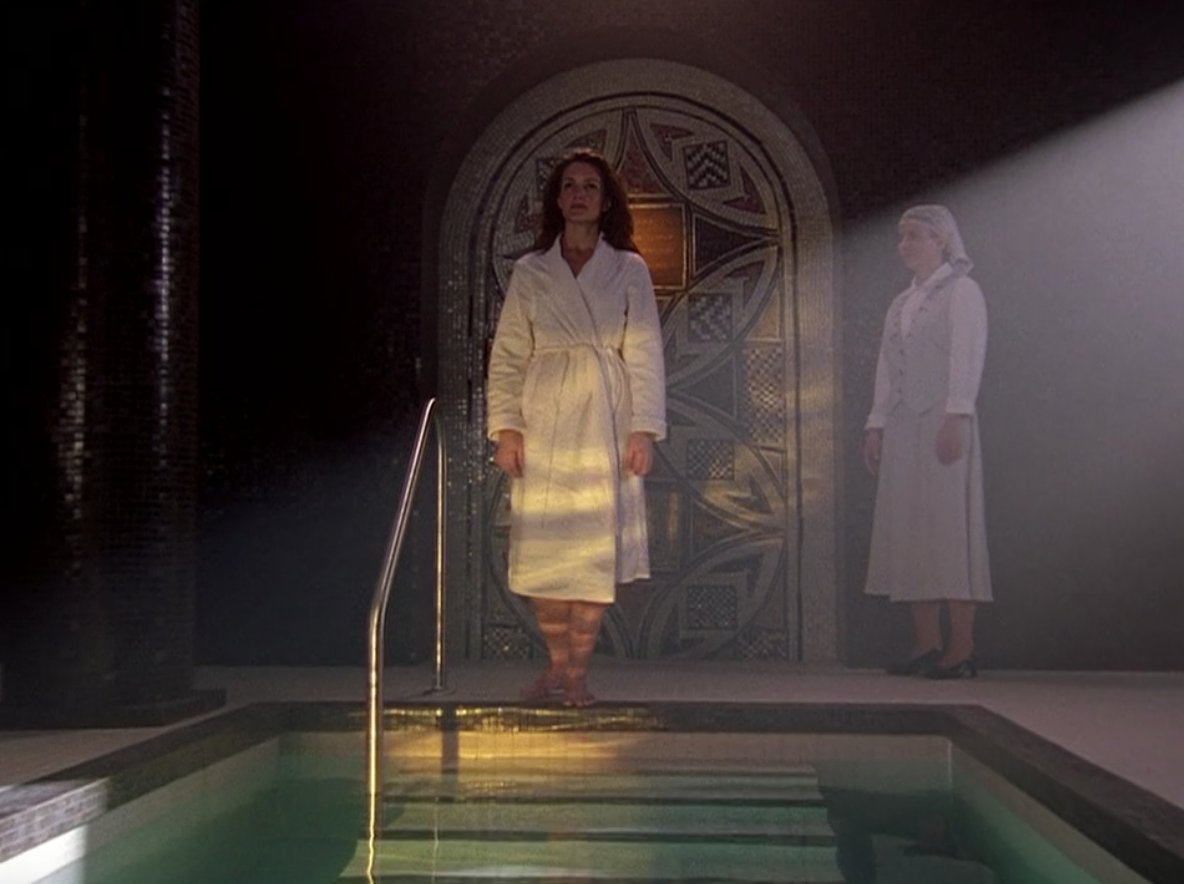
Charlotte’s conversion is, for many, the first mikveh scene they saw on popular TV, and portrays a very traditional view of the ritual. In a 30-second scene, viewers watch her descend naked, modestly covering her chest, in a beautifully tiled basement pool as her friend Carrie’s voice narrates, “After 75 accelerated classes, Charlotte, the Episcopalian Princess, was reborn a Jew.”
Says Bornstein, “This scene [reflects] the standard assumption… the mikveh guide here is more like a guard standing there watching her, not at all the vibe we are going for. Hopefully the focus is on the person immersing, the guide is there in support of the immersion.”
Such portrayals do have an impact. Hailey Lape Kerschner, who participated in the mikveh ritual as part of the conversion process in 2018, told me, “Sex and the City was the only time I saw a mikveh portrayed on TV before converting. I went into it with a lot of anxiety, fully expecting to be uncomfortable with the attendant. I was surprised by how comforting the experience was, how reassuring.”
For a more accurate depiction of the role of mikveh witnesses, check out Mayyim Hayyim’s videos.
2. Transparent
“Off the Grid,” Season 3, Episode 9
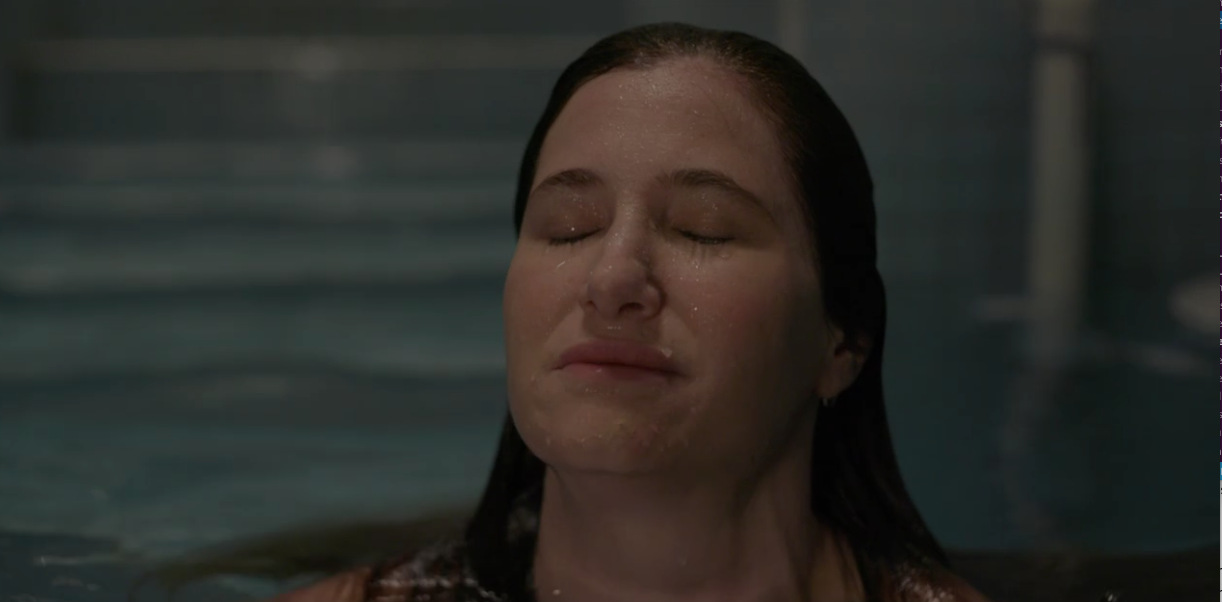
In the second of two mikveh scenes in the very Jewy series Transparent (see also season one, episode six), Rabbi Raquel opens the episode by going through a mikveh ritual, walking somberly to the temple, participating in a few traditional steps like having the attendant check under her fingernails, and letting out a laden breath before submerging.
Bornstein notes, “Raquel just gets it. The imagery and music are beautiful, and the scene depicts a very positive view. She’s marking this moment of transition in order to move forward… She is using the mikveh and listening to her own gut of when she needed it in her life.”
While this scene does offer us a better glimpse as to why and how some people use the mikveh outside of conversion or more traditional “transition” moments (weddings, births, etc.), Bornstein points out a couple of stubborn assumptions that remain embedded: “The witness there is so other and stereotypical… When that image is reinforced, it seems like that is whom the mikveh is for, that the person immersing is going to someone else’s space.” She also says of the moments when the attendant checks Raquel’s hands and touches her back, “Does she want all of that? Because I’m not so sure she does. I wanted to see some indication of trying to tread lightly with someone else’s body.”
3. Younger
“Me, Myself, and O,” Season 3, Episode 6
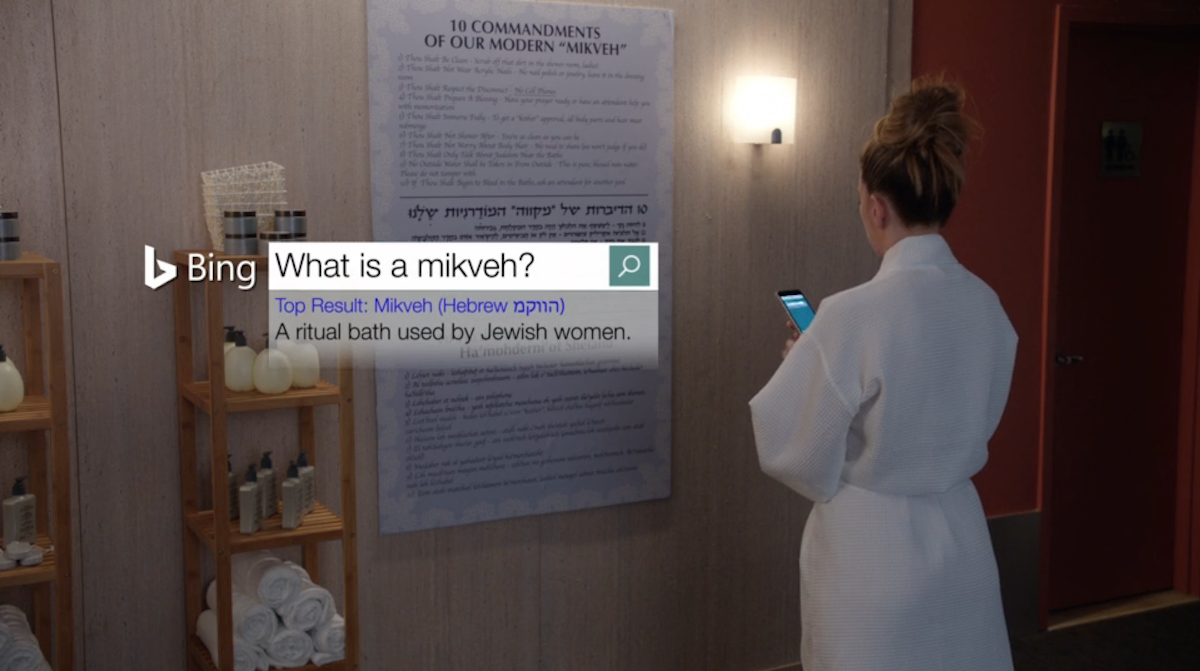
The most controversial of the scenes on this list, TVLand’s Younger took on the mikveh in a comic fashion. In the scene, Maggie, who is not Jewish, attends a mikveh out of a misunderstanding, bringing along another clueless friend, both having zero clue what a mikveh is or that it is even a Jewish ritual. When Maggie enters what is essentially shown as a naked pool party, one of the women points at her cross tattoo, shouting, “There’s a shiksa at the mikveh!” The group erupts into chaos, and the scene ends with the pool being drained.
Says Bornstein, “I have such a love-hate relationship with this one. What I did love about it is that they walked in as themselves. The show was maybe trying to laugh at that, but it was actually beautiful. People are who they are and they should not have to pretend to be something else. People don’t necessarily know what to expect [at the mikveh], and that portrayal was honest and real. Also, the sign on the wall is in English, Hebrew, and transliteration and is more or less accurate, which is so often not the case.”
On the other hand, many people have found the episode extremely offensive (read Allison Joseph’s This Cable TV Show’s Mockery of Mikvah is Unacceptable). Perhaps the most dangerous assumption the episode puts forward is the rejection and fear of non-Jews, culminating in the draining out the “un-pure” water. Bornstein explains how the ideas that a mikveh uses “blessed” water and that someone who is not Jewish entering the pool would make it unclean is completely wrong.
Bornstein adds, “It was so jarring to see the swimming pool. It was just bizarre, not even remotely close.” She explains smaller inaccuracies like the fact the two women still wear make-up and jewelry and the prohibition of tattoos. Further, she says, “The use of ‘thou shalt’ is just gross. Not the way we want to portray [the mikveh]. Also I hate how they put mikveh in quotes, as if it’s not real.”
4. Weeds
“Red in Tooth and Claw,” Season 8 Episode 5
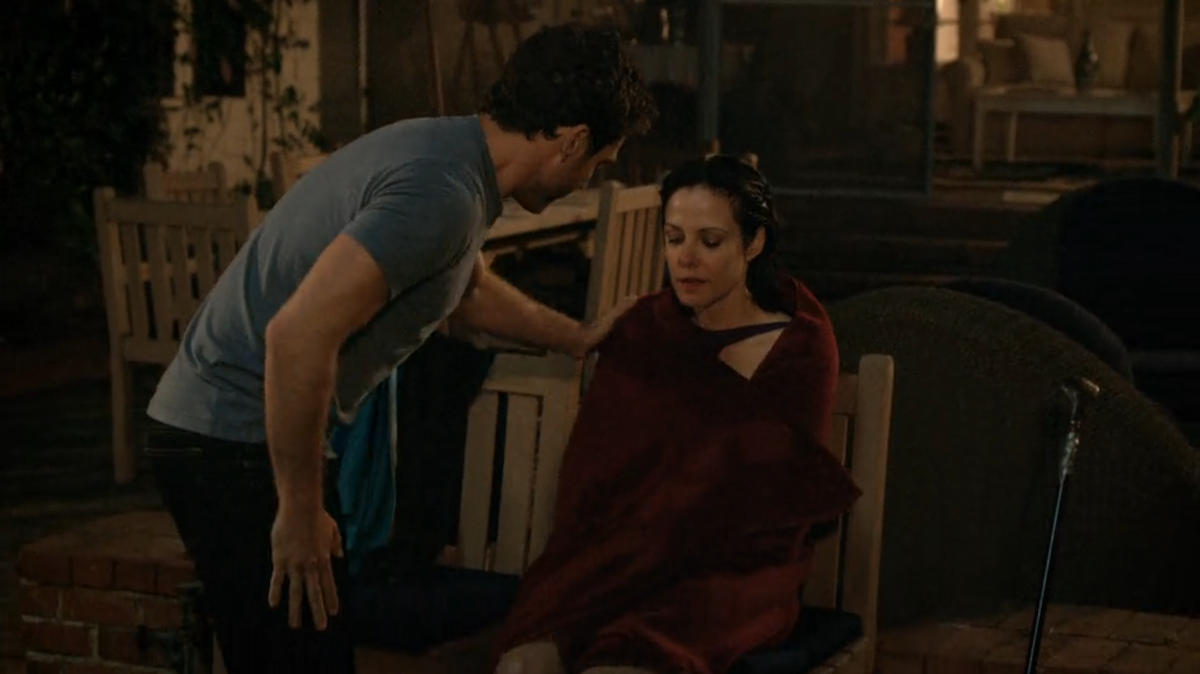
The only scene to not explicitly show an immersion, Weeds offers an enlightening conversation between Rabbi David Bloom and Nancy, a character who has been sneaking into his pool. Bornstein says, “It was a very relevant inclusion of [the mikveh], to talk about it and to have it be a central concept in the dialogue. I found the choice to not show [the immersion] to be a smart one.”
Throughout the scene the rabbi explains the concept of tevilah (ritual immersion) in a modern and meaningful way. Says Bornstein, “What I loved about this one is when he says, ‘There are endless chances to be new.’ I love that idea, and that’s the way that I want people to think about the ritual of mikveh… focusing on the future and hope and renewal and positivity. I think that is really healthy and helpful, taking a step back and shifting our perspective.”
5. Orange is the New Black
“Trust No Bitch,” Season 3, Finale
“From beginning to end, this is the feeling I want people to walk away with,” Bornstein says of the scene in which OITNB’s Cindy completes her conversion to Judaism. “It is so beautiful, the way she shares her story at her beit din, with such an optimistic spirit about what it means to be Jewish. She knows that Jews are diverse.” The scene occurs after a prison break leads to a massive mad dash to the lake. Bornstein continues, “When everyone runs out through the fence, in a way they all use the water to mark a transition.”
And it is impossible to not feel that profound joy when you watch Cindy submerge in the lake, taking the final step in her conversion. Her radiant smile reflects the positivity of the ritual and a deep feeling of acceptance. Read more about this scene here.
Speaking to all of these scenes, Bornstein notes, “Overall I think these clips are really transitional. Each of them in their own way is trying to show a modern view, but there is so much built within our assumptions and stereotypes that is getting in the way.”
Lape Kerschner agrees that there is room for growth: “Before, I thought of a mikveh as an intimidating religious space, one you had to earn the right to be in. But that is not the case at all. It was actually much more welcoming, something that you are doing for yourself. I hope public portrayals would be more in line with how welcoming it is.
Header image via Amazon Studios.
